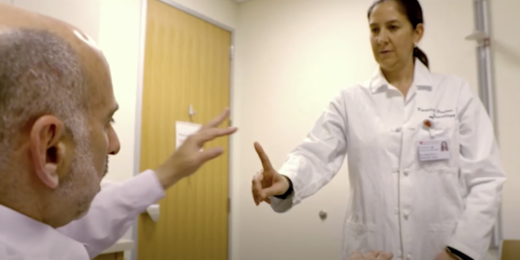Bacteria often have "jumping genes," or genes that move to a different spot in a string of DNA. These jumping genes, or mobile genetic elements, play a key role in the development of antibiotic resistance, spurring scientists like Ami Bhatt, MD, PhD, assistant professor of medicine and of genetics, and graduate student Matt Durrant to more deeply research this facet of shifty biology.
A gene's jump can be totally random -- both in timing and in location -- making them difficult to detect and hard to combat.
But now, a team led by Bhatt and Durrant have developed a new technology, called MGEfinder, that uses automated bioinformatic tools to spot jumping genes in different species of pathogenic bacteria -- including ones that infect humans, such as M. tuberculosis, E. coli and S. aureus. Their findings appear in Cell Host and Microbe.
There are some existing technologies that aim to identify the location of these jumping genes, but their usefulness is limited, said Durrant. "Many of these methods depend on databases of known mobile genetic elements, and that's a problem because mobile genetic elements can come and go, so relying on what is known will inevitably miss a lot of what is new."
Instead, MGEfinder uses a compare-and-contrast technique.
To hunt down the roving genes, the scientists first select a single isolate, or strain of bacteria, and use its sequence as a starting point. Then, they compare thousands of variants of that same bacterial species against the initial isolate. MGEfinder essentially flags where genes have suddenly cropped up in the bacteria's DNA sequence -- these new genes have likely jumped there.
To search for jumping genes, Bhatt and Durrant pulled data from previously published studies containing DNA sequence information about pathogenic bacteria, as well as data from people who have had bacterial infections -- including those that were antibiotic resistant.
That's important, said Bhatt. It allows for MGEfinder to not only continue "learning" about new jumping genes involved in infections in real patients, but could also pinpoint jumping genes that play a role in antibiotic resistance.
"Let's say someone has an E. coli infection and they are treated with an antibiotic, but they don't get better. The subsequent E. coli that continues to grow will sometimes have acquired resistance to the antibiotic that was administered," said Bhatt. "While we can sometimes identify a mutation in the DNA that has caused this new antibiotic resistance, in some cases, we cannot identify the 'smoking gun' or cause of the new resistance."
Using MGEfinder in the lab, Bhatt said, they can figure out some of these mystery cases. They've found that jumping genes are responsible for up to 15% of newly-acquired antibiotic resistance in some of these infections.
The tool could also help with the development of new treatments for bacterial infections that evade antibiotics. For example, in the future, it could be possible to treat bacterial infections with both an antibiotic and a jumping-gene-inhibiting agent.
"We hope that MGEfinder can help inform these decisions and stop organisms from escaping antibiotics in the future," said Bhatt.
In the meantime, Durrant said he hopes that MGEfinder will be used by other researchers. "We're still trying to improve our broad understanding of how mobile elements work in different bacterial species, and how it can change bacterial behavior -- how they're mutating and if that drives adaptation to antibiotics."
Photo by Sarah Pflug




